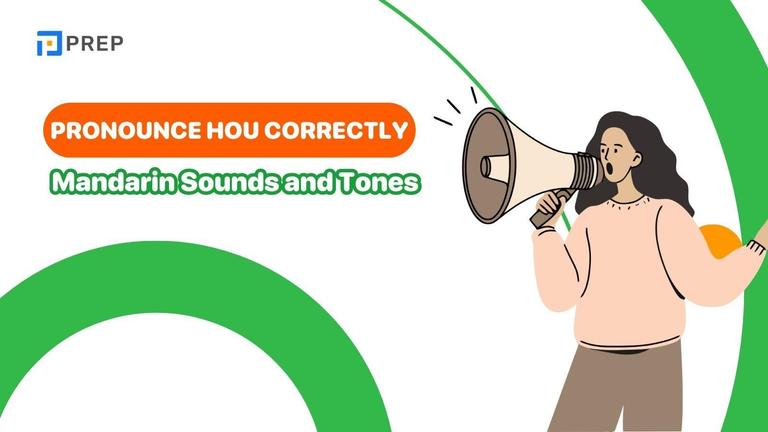How to Give Directions in Chinese: Words & Patterns
Learning how to give and ask for directions in Chinese is essential for travelers and students. This guide provides useful vocabulary, sentence patterns, and real-life dialogues. You’ll also find pronunciation tips and HSK-focused exercises to boost your speaking skills.
I. Essential Vocabulary for Directions in Chinese
Learning directions in Chinese is crucial for anyone planning to travel or live in Chinese-speaking regions. Whether you're asking a taxi driver for the quickest route, finding your way through a bustling shopping district, or navigating public transportation, directional vocabulary forms the backbone of practical communication.
Mastering Chinese directions transforms potentially stressful situations into confident interactions. You'll find yourself naturally engaging with locals when asking for help, discovering hidden gems through conversations, and moving independently through cities without relying solely on translation apps.
The most frequent scenarios include:
- Taxi conversations: Giving clear instructions to drivers using landmarks and street references
- Location finding: Asking locals for specific places like restaurants, hotels, or attractions
- Public transport: Understanding subway announcements and bus route information
Through directional vocabulary, you'll learn to ask "请问,银行在哪里?" (Excuse me, where is the bank?) and understand responses like "直走,然后右转" (Go straight, then turn right). These foundational phrases open doors to more complex conversations and cultural exchanges.
1. Essential Vocabulary for Directions in Chinese
Below are the most common words and expressions grouped by theme. Each word includes Chinese characters, pinyin, and English meaning for easier study.
Basic Direction Words
|
Chinese |
Pinyin |
English |
|
上 |
shàng |
up / above |
|
下 |
xià |
down / below |
|
左 |
zuǒ |
left |
|
右 |
yòu |
right |
|
前面 |
qiánmiàn |
in front |
|
后面 |
hòumiàn |
behind |
|
旁边 |
pángbiān |
beside / next to |
|
对面 |
duìmiàn |
opposite / across from |
Place and Location Words
|
Chinese |
Pinyin |
English |
|
火车站 |
huǒchē zhàn |
train station |
|
地铁站 |
dìtiě zhàn |
subway station |
|
机场 |
jīchǎng |
airport |
|
饭店 |
fàndiàn |
restaurant |
|
医院 |
yīyuàn |
hospital |
|
银行 |
yínháng |
bank |
|
公园 |
gōngyuán |
park |
|
洗手间 |
xǐshǒujiān |
restroom |
Verbs for Movement and Position
|
Chinese |
Pinyin |
English |
|
走 |
zǒu |
to walk / to go |
|
去 |
qù |
to go to |
|
到 |
dào |
to arrive / reach |
|
经过 |
jīngguò |
to pass by |
|
转 |
zhuǎn |
to turn |
|
一直走 |
yìzhí zǒu |
to go straight |
2. Key Sentence Patterns for Giving and Asking Directions
Once you know the essential vocabulary, the next step is to practice how to ask and give directions in natural Chinese. Below are common sentence structures with examples.
Asking for Directions (问路句型)
|
Chinese |
Pinyin |
English |
Usage |
|
请问,[地点]在哪里? |
Qǐngwèn, [dìdiǎn] zài nǎlǐ? |
Excuse me, where is [place]? |
Most polite and common |
|
[地点]怎么走? |
[Dìdiǎn] zěnme zǒu? |
How do I get to [place]? |
Direct and simple |
|
从这里到[地点]怎么走? |
Cóng zhèlǐ dào [dìdiǎn] zěnme zǒu? |
How do I get from here to [place]? |
Specific starting point |
|
不好意思,打扰一下 |
Bùhǎoyìsi, dǎrǎo yīxià |
Sorry to bother you |
Polite conversation starter |
|
麻烦您 |
Máfan nín |
Could you please help me |
Very polite request |
|
请问,地铁站在哪里? |
Qǐngwèn, dìtiě zhàn zài nǎlǐ? |
Excuse me, where is the subway station? |
Practical example |
Giving Directions (指路句型)
|
Chinese |
Pinyin |
English |
Usage Context |
|
往[方向]走 |
Wǎng [fāngxiàng] zǒu |
Go in the [direction] of |
Basic direction giving |
|
在[地点][方向]转 |
Zài [dìdiǎn] [fāngxiàng] zhuǎn |
Turn [direction] at [place] |
Specific turning points |
|
[地点]就在[位置] |
[Dìdiǎn] jiù zài [wèizhì] |
[Place] is right at [location] |
Direct location |
|
一直走到... |
Yīzhí zǒu dào... |
Keep going straight until... |
Continuous direction |
|
先...然后...最后 |
Xiān...ránhòu...zuìhòu |
First...then...finally |
Sequential instructions |
|
走大概[时间/距离] |
Zǒu dàgài [shíjiān/jùlí] |
Walk for about [time/distance] |
Distance indication |
|
一直往前走,在红绿灯那里右转 |
Yīzhí wǎng qián zǒu, zài hóng lǜ dēng nàlǐ yòu zhuǎn |
Go straight ahead, turn right at the traffic light |
Complete example |
Position and Location Prepositions (位置介词)
|
Chinese |
Pinyin |
English |
Example Sentence |
Translation |
|
在 |
zài |
At, in, on |
银行在右边 |
The bank is on the right |
|
从 |
cóng |
From |
从这里开始走 |
Start walking from here |
|
到 |
dào |
To, until |
走到路口 |
Walk to the intersection |
|
向 |
xiàng |
Toward, in direction of |
向左转 |
Turn toward the left |
|
沿着 |
yánzhe |
Along, following |
沿着这条路走 |
Walk along this road |
|
朝 |
cháo |
Facing, toward |
朝北走 |
Walk facing north |
|
顺着 |
shùnzhe |
Following, along with |
顺着河边走 |
Walk following the riverside |
These structured patterns provide the essential framework for natural direction conversations in Chinese, whether you're asking for help or providing guidance to others.
II. Practical Dialogues and Scenarios
Real-world conversations about directions follow predictable patterns that you can master with practice. These authentic dialogues represent the most common situations you'll encounter, from casual street interactions to formal transportation requests. Each scenario includes cultural notes and practical tips to help you navigate successfully.
Street Conversations (街头对话)
Scenario: Asking a Pedestrian for Directions
- You: 不好意思,请问一下,最近的银行在哪里?
(Bùhǎoyìsi, qǐngwèn yīxià, zuìjìn de yínháng zài nǎlǐ?)
Excuse me, could you tell me where the nearest bank is? - Local: 银行啊,你沿着这条路一直走,大概走五分钟,在第二个红绿灯那里右转就看到了。
(Yínháng a, nǐ yánzhe zhè tiáo lù yīzhí zǒu, dàgài zǒu wǔ fēnzhōng, zài dì'èr gè hóng lǜ dēng nàlǐ yòu zhuǎn jiù kàn dào le.)
The bank? Go straight along this road for about five minutes, turn right at the second traffic light and you'll see it. - You: 谢谢您!那个银行叫什么名字?
(Xièxie nín! Nàge yínháng jiào shénme míngzi?)
Thank you! What's the name of that bank? - Local: 中国银行,很大的招牌,很容易看到的。
(Zhōngguó yínháng, hěn dà de zhāopái, hěn róngyì kàn dào de.)
Bank of China, it has a big sign, very easy to spot.
Cultural Note: Chinese people often provide additional helpful details like landmark descriptions and estimated walking times without being asked.
Taxi Situations (出租车情况)
Scenario: Giving Directions to a Taxi Driver
- Driver: 师傅,您去哪里?
(Shīfu, nín qù nǎlǐ?)
Where are you going, sir/madam? - You: 我想去王府井,您知道怎么走吗?
(Wǒ xiǎng qù Wángfǔjǐng, nín zhīdào zěnme zǒu ma?)
I want to go to Wangfujing, do you know how to get there? - Driver: 知道知道,从这里开车大概二十分钟。现在有点堵车,我们走另一条路吧。
(Zhīdào zhīdào, cóng zhèlǐ kāichē dàgài èrshí fēnzhōng. Xiànzài yǒudiǎn dǔchē, wǒmen zǒu lìng yī tiáo lù ba.)
Yes, I know. It's about twenty minutes by car from here. There's some traffic now, let's take another route. - You: 好的,麻烦您了。请在地铁站附近停车就可以了。
(Hǎo de, máfan nín le. Qǐng zài dìtiě zhàn fùjìn tíngchē jiù kěyǐ le.)
Okay, thank you for your help. Please stop near the subway station. - Driver: 没问题,一会儿就到了。
(Méi wèntí, yīhuǐr jiù dào le.)
No problem, we'll be there soon.
Practical Tip: Always specify a nearby landmark for your destination, as exact addresses can be difficult for drivers to locate quickly.
Tourist Destination Scenarios (旅游景点场景)
Scenario: At a Tourist Information Center
- Staff: 您好,需要什么帮助吗?
(Nín hǎo, xūyào shénme bāngzhù ma?)
Hello, do you need any help? - Tourist: 您好,我想去故宫,从这里怎么走?
(Nín hǎo, wǒ xiǎng qù Gùgōng, cóng zhèlǐ zěnme zǒu?)
Hello, I want to go to the Forbidden City, how do I get there from here? - Staff: 有两种方法:坐地铁或者打车。坐地铁的话,您先坐1号线到天安门东,然后步行五分钟就到了。
(Yǒu liǎng zhǒng fāngfǎ: zuò dìtiě huòzhě dǎchē. Zuò dìtiě de huà, nín xiān zuò 1 hào xiàn dào Tiān'ānmén dōng, ránhòu bùxíng wǔ fēnzhōng jiù dào le.)
There are two ways: subway or taxi. For subway, first take Line 1 to Tiananmen East, then walk five minutes. - Tourist: 地铁票在哪里买?
(Dìtiě piào zài nǎlǐ mǎi?)
Where can I buy subway tickets? - Staff: 就在那边,有自动售票机,也可以用手机支付。
(Jiù zài nàbiān, yǒu zìdòng shòupiào jī, yě kěyǐ yòng shǒujī zhīfù.)
Right over there, there are automatic ticket machines, you can also pay with your phone.
Cultural Insight: Tourist information staff in major Chinese cities often speak some English, but showing effort to communicate in Chinese is always appreciated and often results in more detailed, helpful information.
These dialogues provide templates you can adapt for countless similar situations, building your confidence for real-world navigation challenges.
III. Using Directions in Chinese in HSK Exams
Direction vocabulary frequently appears across HSK levels, from basic location questions in HSK 1 to complex navigation scenarios in HSK 5-6. Understanding how this vocabulary is tested helps you prepare strategically and boost your overall exam performance.
HSK Listening Section Applications (HSK听力部分应用)
HSK 1-2 Listening Patterns Direction vocabulary in beginner levels focuses on simple location identification:
- Questions like "银行在哪里?" (Where is the bank?)
- Basic responses using "在...旁边" (next to) or "在...前面" (in front of)
- Simple directional commands: "往左走" (go left), "往右转" (turn right)
HSK 3-4 Listening Scenarios Intermediate levels present more complex navigation situations:
- Multi-step directions with sequence words: "先...然后...最后" (first...then...finally)
- Transportation-related vocabulary: "坐地铁到..." (take the subway to...)
- Distance and time references: "走五分钟" (walk five minutes), "很近" (very close)
HSK 5-6 Advanced Applications Advanced levels test comprehensive understanding of:
- Detailed route descriptions with multiple landmarks
- Alternative route suggestions when directions are unclear
- Cultural context in direction-giving conversations
Sample HSK Listening Question (HSK 3 Level):
- Audio: "从这里到图书馆,你先往前走,在第一个路口左转,然后一直走就能看到了。" Question: 图书馆在哪个方向?
- Answer: 需要先往前走,然后左转
HSK Speaking Section Applications (HSK口语部分应用)
HSK Speaking Test Scenarios Direction vocabulary appears in speaking tests through:
- Task 1 (HSK 4-6): Reading aloud passages containing directional descriptions
- Task 2: Describing routes from memory or explaining how to reach specific locations
- Task 3: Engaging in simulated conversations about navigation and location finding
Common Speaking Prompts
- "请描述从学校到你家的路线" (Please describe the route from school to your home)
- "如果朋友来找你,你会怎么给他指路?" (If a friend comes to visit you, how would you give directions?)
- "描述你最喜欢的商店在什么地方" (Describe where your favorite store is located)
Sample Speaking Response Strategy: Prompt: 请告诉我从火车站到你的学校怎么走。 Structure your answer:
- Start with the departure point: "从火车站出来..."
- Use sequence words: "首先...然后...最后..."
- Include landmarks: "经过银行...看到红绿灯..."
- End with arrival confirmation: "就到学校了"
Common Test Mistakes to Avoid
- Confusing 左 (left) and 右 (right) under pressure
- Mixing up sequence words like 先 (first) and 最后 (finally)
- Forgetting to use appropriate measure words with distance expressions
- Using overly complex vocabulary when simpler HSK-appropriate terms suffice
Mastering directional vocabulary not only improves your HSK scores but also builds practical communication skills essential for real-world Chinese language use.
Mastering how to give and understand directions in Chinese goes beyond memorizing words—it’s about using them naturally in real situations, knowing the right sentence patterns, and building confidence in daily communication. From finding your way in a new city to handling travel scenarios or HSK listening tasks, direction-related language opens the door to smoother, more meaningful interactions in Mandarin.
Keep strengthening your skills with PREP’s clear vocabulary lists, practical dialogues, and exam-focused tips—designed to help you use Chinese with ease, one essential phrase at a time.

Hi I'm Chloe, and I am currently serving as an Product Content Administrator at Prep Education. With over five years of experience in independent online IELTS study and exam preparation, I am confident in my ability to support learners in achieving their highest possible scores.
Comment
Premium content
View allPersonalized roadmap
Most read












